|
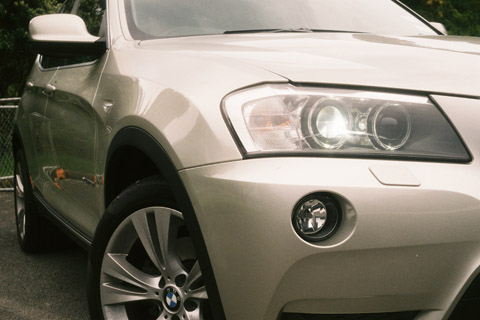
There’s something about the original BMW X3 I didn’t like. It had nothing to do with its driving dynamics—BMW’s claim to fame when it comes to its X range of SUVs—but how it looked.
The X5, in either of its incarnations, looks purposeful and chunky. The X1 has a low-slung look, clear about its intent as a sporty
urban runabout. But the X3 seemed to have a hard time deciding which one it was. It was the middle child, the Malcolm of the BMW models.
However, that has been solved with the F25 series, the second incarnation of the X3. For a start, it’s moved up a size,
giving the X1 more breathing space at the bottom of the range. Secondly, the X3 has taken more of the personality of its big brother: it’s
decided to be chunky and practical.
However, the lines still show a bit of flair: the feature waistline that leads from the front door through to rear wings has
a swoopiness that contrasts pleasantly with the angular headlights. But it’s not fussy in the way a Mercedes-Benz E-Klasse and CLS are
fussy, even overornamented. It’s balanced, never going all the way into confusing the eye. The F25 has the perfect mixture between
practicality, timelessness (which BMWs of yore had), and the flourishes expected of early-2010s design.
It’s also the first X model we’ve tested with BMW’s
Efficient Dynamics as standard, which means, among the driving experience,
stop–start. As a feature, it impressed many of our passengers, especially
when you give the environmental explanation for it. Why generate
emissions at traffic lights when you’re standing still? Only one
expressed her reservations about what it might do to the starter
motor, but considering the technology has been around for three
decades and is now mainstream, we have faith in its reliability. (Those nervous about it can always switch it off.)
In our test, we returned 34·6 mpg Imperial (8·16 l/100
km) in our Xdrive20d, not bad considering most of it was spent in
urban settings, unlike our other tests where at least part of it
is on the motorway. We’ve little doubt that had we taken the X3
on lengthier journeys, we could have seen 37 mpg (7·6 l/100 km).
Also standard on our test car, in a very pleasant champagne
colour, was the latest version of BMW’s sat-nav, which not only
provides the map, but draws three-dimensional buildings of a good
deal of Wellington’s city centre. The practicality of this is dubious:
surely if I peered my head out the window I can see something similar,
and isn’t the point of a map to show you the streets, rather than
have them obscured by buildings? However, as another gee-whiz feature,
like the stop–start, it impressed others.
There is also Hill Descent Control, the feature developed
at Rover that BMW inherited when it bought the former “English patient”
in the 1990s—might we call it the English patent?—though with our
urban road test, we didn’t get a chance to use it.
Fortunately, the X3 is not just about toys. As expected
from BMW, it handles wonderfully. Of course, there’s the higher
centre of gravity to contend with, but in terms of grip and steering
responsiveness, it does remarkably well—with shades of the previous
X5, which was always considered a driver’s SUV. Size-wise, it’s
the best bet from our point of view: where the X1 might be thought
of as a taller estate car, the X3 is a reasonable width (1,881 mm,
just under an inch wider than the 5-series, and, importantly, a
centimetre narrower than the Volvo XC60) and the seating position
is perfect for those who favour SUVs: the seats are roughly at buttock
height, so there’s no climbing involved—which shorter and some average-height
drivers have to do for the X5 and X6.
The seats themselves are supportive, while the interior
ambiance is every bit as good as the larger models: the same machined
aluminium look, the neat gear lever, and materials that don’t have
you thinking that you are driving a Claytons model, a reaction which
a lesser, basic X1 will prompt—or, for that matter, the Renault
Koleos and a number of other SUVs, stripping things out in the name
of utility and easy surfaces to wipe.
To us, this is the complete SUV. Get a larger model
of any marque and you’d be hard pressed to convince people that
it’s good for the environment, and you might run up against the
anti-SUV camp. Get a smaller one and you wonder why you bothered:
wouldn’t it have been more sensible to get a station wagon instead?
If you must have an SUV, the X3 is, in the context of the early 2010s and diesel at nearly NZ$1·50 per litre, Goldilock’s Baby Bear’s bed: it’s
just right.
•
Jack Yan is publisher of Lucire.
|
 |
The lines still show a bit of flair: the feature waistline that leads from the front door through to rear wings has a swoopiness that contrasts pleasantly with the angular headlights. But it’s not fussy in the way a Mercedes-Benz E-Klasse and CLS are fussy, even overornamented
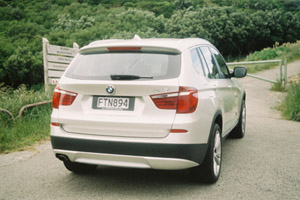
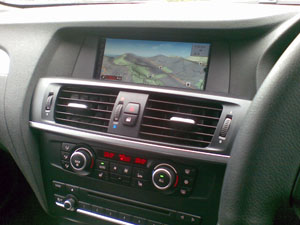
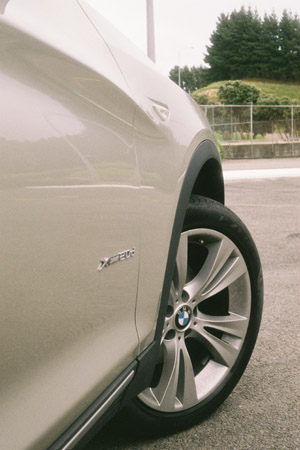
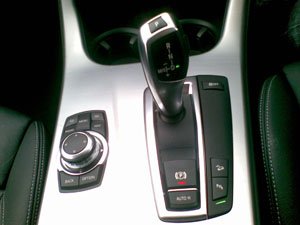
|

